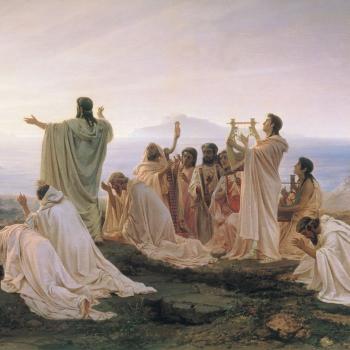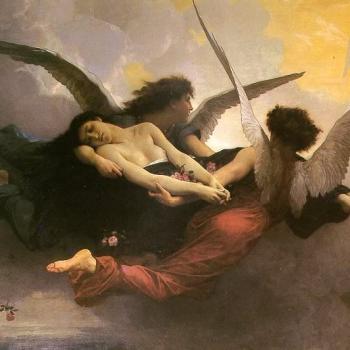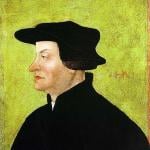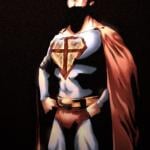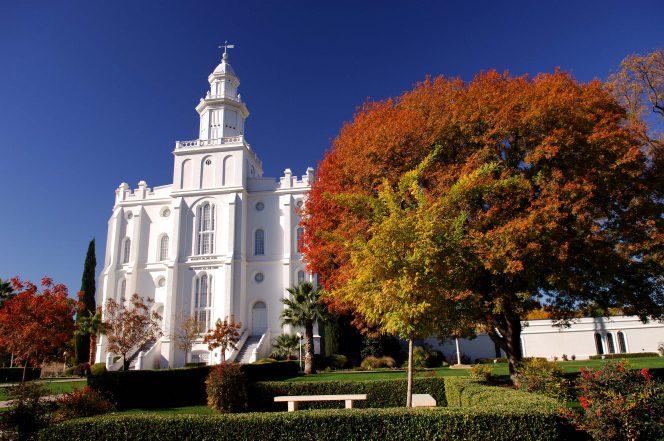
(LDS Media Library.)
Back in 2022, in preparation for the launch of our Six Days in August film project (which continues with our series of forthcoming Becoming Brigham documentary short features, currently in production), I reread Eugene England, Brother Brigham (Salt Lake City: Bookcraft, 1980) and, as on my two previous readings of the book, really enjoyed it. As I’ve said before, I recommend Brother Brigham highly. If you can get hold of a copy of it, or find it online, I encourage you to read it.
In the meanwhile, here’s a quotation from Brother Brigham, drawn from remarks that he offered on 1 January 1877 during a partial dedication of the St. George Utah Temple, which was still not fully completed. The partial dedication featured a series of three dedicatory prayers: the baptistry by Wilford Woodruff, the assembly room by Erastus Snow, and the sealing room by Brigham Young, Jr. Brigham Young himself was in very poor health — he was in St. George for the winter because of its warm weather — and he apparently spoke only briefly. The full dedication would come on 6–8 April 1877. President Young would preside at those dedicatory services, too, but the actual dedication was performed by Daniel H. Wells, and Brigham Young would die later that year, on 29 August 1877.
This is a portion of what he had to say during that partial dedication of the temple on the first day of the new year:
Now we have a Temple which will be finished in a few days, and of which there is enough completed to commence work therein, which has not been done since the days of Adam, that we have any knowledge of. Now those that can see the Spiritual Atmosphere, can see that many of the Saints are still glued to this earth, and lusting and longing after the things of this world, in which there is no profit. It is true we should look after the things of this world and devote all to the building up of the Kingdom of God . . . [but] suppose we were awake to this thing, namely the salvation of the human family, this house would be crowded . . . from Monday Morning until Saturday Night. This house was built here in this place purposely, where it is warm and pleasant in the winter time, and comfortable to work, and also for the Lamanites [American Indians] and all those coming from the South and other places to receive their Endowments and other blessings . . . All of the angels of heaven are looking at this little handful of people, and stimulating them to the salvation of the human family. . . . When I think upon this subject I want the tongues of Seven Thunders to wake up the people. (228)
Back many years ago, when I was serving on the Gospel Doctrine writing committee for the Church of Jesus Christ of Latter-day Saints, I drew the assignment to write a lesson on Brigham Young for the pending curriculum year — a year that was to be devoted to the history of the Church. I had already, by that time, grown dissatisfied with the almost uniform depiction of Brigham Young as master colonizer, organizational genius, brilliant leader, and practical man of action. He was, of course, all of those things. But he was all of those things in the service of the Kingdom of God, striving to fulfill the vision of the founding Prophet of the Restoration. First and foremost, he was a prophet and an apostle, a great missionary, and a dedicated disciple of both Jesus Christ and Joseph Smith.
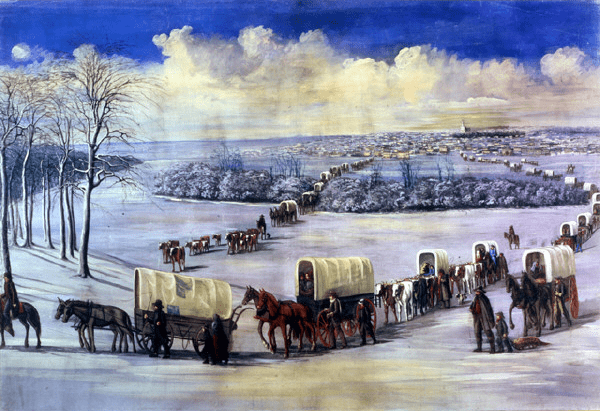
(Wikimedia Commons public domain image)
So, along with a few other topics, I emphasized his commitment to the construction of temples — to, for example, the completion of the temple in Nauvoo, despite his recognition that the Saints would shortly be compelled to abandon it and the city; to his designation of the site for the Salt Lake Temple within mere days of arriving in the Valley of the Great Salt Lake; and to his hurrying along of the St. George Utah Temple, the only temple that he lived to see completed in the West. I also incorporated into my lesson draft part of the quotation above:
[S]uppose we were awake to this thing, namely the salvation of the human family, this house would be crowded . . . from Monday Morning until Saturday Night. . . . All of the angels of heaven are looking at this little handful of people, and stimulating them to the salvation of the human family. . . . When I think upon this subject I want the tongues of Seven Thunders to wake up the people.
However, when I read through the final version of the lesson that I had written and that our writing committee had approved and sent up to the curriculum committee in Salt Lake City, it had been heavily revised and the spiritual content that I had attempted to emphasize had been greatly reduced where it hadn’t been eliminated altogether. The revised lesson portrayed Brigham Young as — whaddya know? — a master colonizer, an organizational genius, a brilliant leader, and a practical man of action.
One of the most admirable aspects of Eugene England’s Brother Brigham is that Eugene England recognized Brigham Young for what, at his core, he really was — a prophet and an apostle, a great missionary, and a dedicated disciple of both Jesus Christ and Joseph Smith whose enormous talents as a leader and a “practical man” were consecrated to the building up of the Kingdom of God on earth. Brigham’s commitment to temples and temple ordinances offers a superb illustration of my point: To a purely “practical man” in the ordinary, worldly, sense of that term, such a commitment would have seemed the very height of impracticality, an utter waste of time. Think of the historically authentic scene in Six Days in August, when, on the eve of the first departures of the Saints westward from Nauvoo, under the threat of violent mobs and the urgent need to complete the building of wagons, the acquisition of teams of oxen, the outfitting of pioneer companies, and the gathering of supplies, Brigham and, following his direction, his fellow apostles devoted marathon sessions in the still partially completed Nauvoo Temple to administering the ordinances of the temple to the Latter-day Saints. These are not the actions of a merely “practical” man. Not in any ordinary sense of that word.





